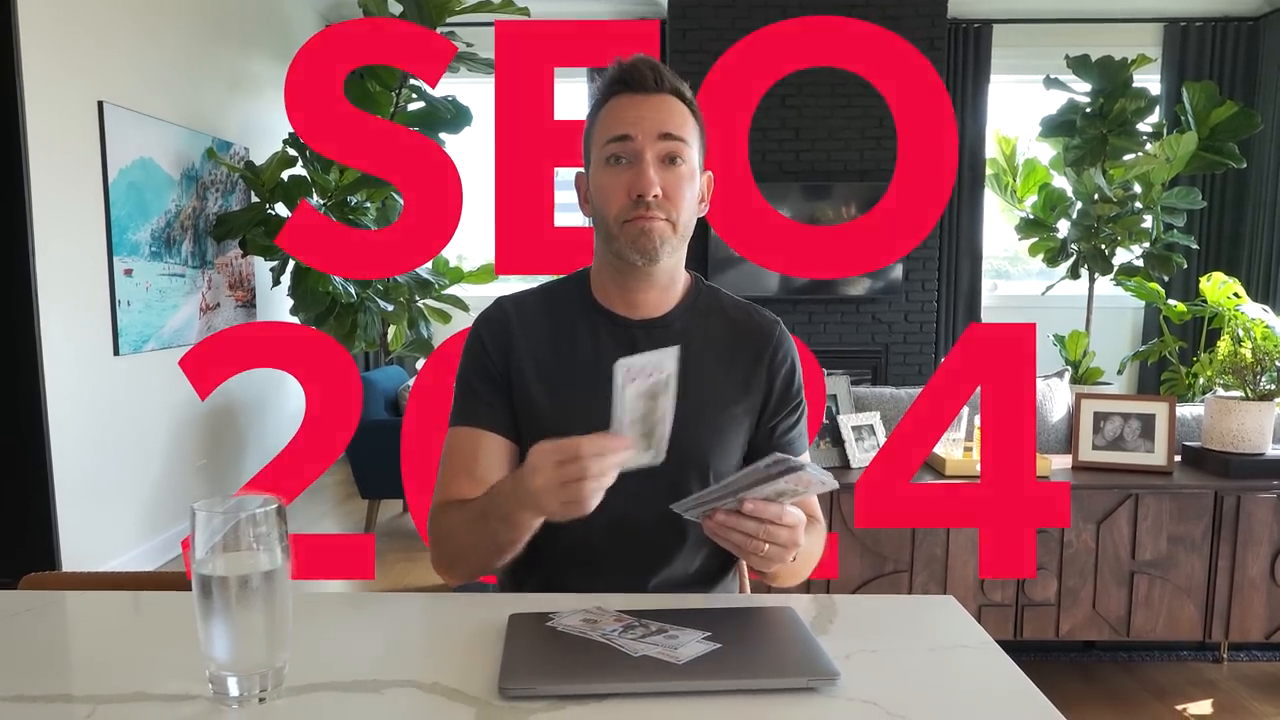Revolutionary SEO strategies for 2024
The rules of SEO are changing rapidly, and 2024 brings a whole new game. Powered by artificial intelligence and innovative tools, SEO has moved beyond the outdated techniques of keyword-stuffing and bulk content creation. The landscape is evolving, and for marketers, creators, and business owners, understanding these changes is critical to staying ahead of the competition.
In this article, we’ll dive into the disruption AI has caused, the opportunities it presents, and three actionable, futureproof SEO strategies. These tactics will position you as a leader in your niche and ensure that your content continues to rank well in Google while driving traffic and sales.
The shifting SEO landscape in 2024

The AI Revolution has dramatically changed how SEO works in 2024.
To understand how SEO has transformed, we need to explore the influence of AI. Tools like ChatGPT have made content creation easier than ever, but this mass production of content comes with consequences.
Thousands of businesses, including content marketing agencies and small enterprises, began churning out AI-generated articles at scale. The problem? Much of this content was of low quality—often sterile, robotic, and devoid of perspective. Over time, such "commodity content" flooded the internet, leading to a decline in engagement as users searched for content with genuine insight and expertise.
In May, Google introduced the Google Search Experience (GSSE), a groundbreaking AI-driven feature designed to generate search query answers on its own rather than directing users to websites. This left SEO experts wondering: if Google isn’t serving organic web content as the top priority, how do your efforts still matter?
While these disruptions may sound daunting, they also offer significant opportunities—if you know how to adapt.
Strategy #1: Humanize AI-generated content

AI tools like ChatGPT need your human expertise to shine in 2024.
Artificial Intelligence remains a powerful tool in speeding up workflows, as seen in an MIT study where unskilled writers using AI increased output by 40% and quality by 18%. However, reliance solely on AI won’t get you far in 2024. Commodity content is no longer sufficient to rank or engage audiences.
Why AI content fails
AI lacks the emotional, professional, or experiential layers that humans bring to storytelling. For example:
- AI doesn’t learn from mistakes or make decisions based on actual life challenges.
- It doesn’t offer unique opinions or advice rooted in real-world expertise.
- Its generic tone makes content feel robotic and unappealing.
This is why human intervention is essential. You can use AI to assist in tasks like topic generation and basic drafts, but the key is adding your voice, expertise, and engaging anecdotes to make the content truly valuable to readers.
Practical steps to humanize your content
Start by creating a topical map, a collection of key topics in your niche that, when thoroughly covered, establish your site as an authority. Once AI generates the list of topics and headlines, customize and enrich the content by:
- Adding personal stories or insights.
- Sharing professional advice unique to your experience.
- Using a tone that aligns with your brand (casual, professional, passionate, etc.).
By doing this, your content will rise above the generic competition while offering solutions audiences genuinely need.
Strategy #2: Optimize for Google’s AI-powered snapshots

Google's AI snapshots reward concise, quality content.
Google’s AI-powered snapshots are essentially the new featured snippets, directly competing with traditional organic search rankings. The snapshot compiles short, AI-driven answers while attributing sources, offering visibility opportunities for well-optimized content.
How the snapshots work
When a user searches, Google provides an AI-generated answer directly in the search results. Sources cited in these snapshots are clickable links, giving you the potential to earn significant traffic if your content makes the cut. Studies have shown that links in featured snippets (or now snapshots) get clicked roughly 26% of the time.
How to optimize for AI snapshots
Here’s how you can prepare your content to rank high in Google’s AI-powered system:
- Answer questions directly: Provide clear, concise answers to commonly searched questions linked to your niche. Place them at the top or strategically throughout your post.
- Use precise subheadings: While Google can infer an answer without a dedicated H2 or H3, using headers like 'When is the best time to buy ATVs?' increases relevance.
- Be concise: Keep answers within 150-300 characters. Google prefers simple, digestible snippets.
- Incorporate trusted sources: Back up your content with reliable data or links if possible.
Even with these snapshots in place, creating robust, authoritative content that expands beyond the answers is critical. Visitors will likely want more detailed solutions, which your content should provide.
Strategy #3: Leverage the power of YouTube

YouTube is a goldmine for SEO traffic and engagement.
For many businesses, one of the biggest opportunities in 2024 lies not in written content but in video. YouTube is the second-largest search engine globally, and its influence continues to grow. As more people turn to video for information, YouTube has become invaluable for building trust and driving conversions.
Why YouTube is critical
- Dual visibility: YouTube videos appear both in YouTube searches and Google search results.
- Trust-building tool: Videos create a personal connection with viewers that’s challenging to replicate in written content.
- Long-term growth: Unlike AI-generated written content that risks oversaturation, video remains largely AI-resistant.
Optimizing videos for SEO
To get the most out of YouTube, follow these steps:
- Keyword research: Use tools like MorningFame to find phrases with high potential to rank based on your channel's size and niche.
- Craft compelling titles and descriptions: Combine keywords with an intriguing promise or curiosity hook. For example, instead of “Bathroom Renovation Tips,” try “5 Bathroom Renovation Hacks to Save You $1,000 This Weekend.”
- Leverage your transcript: Include keywords in spoken lines at the beginning of your video. YouTube’s algorithm detects these phrases, influencing search rank.
- Consistent branding and visuals: Intriguing thumbnails and on-brand visuals ensure higher click-through rates.
Embedding your YouTube videos on your website with supporting blog content improves rankings for both formats. This multi-channel synergy amplifies your reach, driving new opportunities for your brand.
Additional benefits of YouTube videos
Engaging video content naturally leads to longer watch times and recurring viewership. This stickiness encourages YouTube to promote your videos to broader audiences, increasing the chances of discovery across home pages and related-video sections.
Conclusion: Take control of 2024’s SEO landscape
The SEO landscape for 2024 is undoubtedly challenging, but it’s also filled with unparalleled opportunities. By shifting your mindset toward leveraging AI effectively, crafting human-centric content, and dominating YouTube, you’ll be equipped to outpace your competitors and thrive in this new era.
These three strategies can set you ahead of 95% of marketers still clinging to outdated tactics:
- Humanize your AI-assisted content with rich insights and personal touches.
- Optimize every post for concise, AI-driven answer snapshots.
- Embrace YouTube as a powerful search engine that fosters deep audience connections.
The key is to adapt and stay ahead of trends, ensuring your SEO strategy not only boosts rankings but also delivers meaningful results for your business. Ready to make 2024 your breakthrough SEO year? Let’s get to work!
